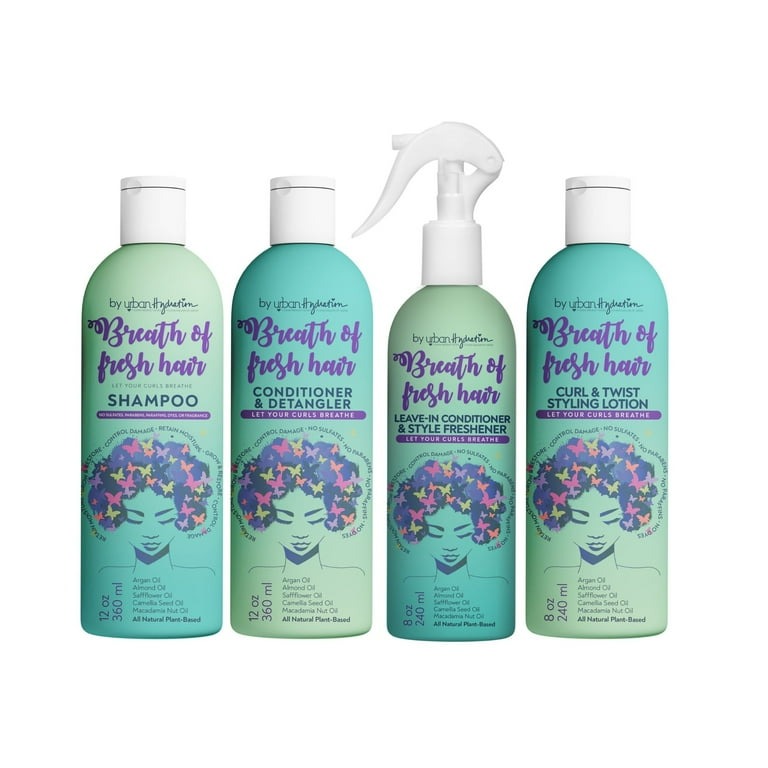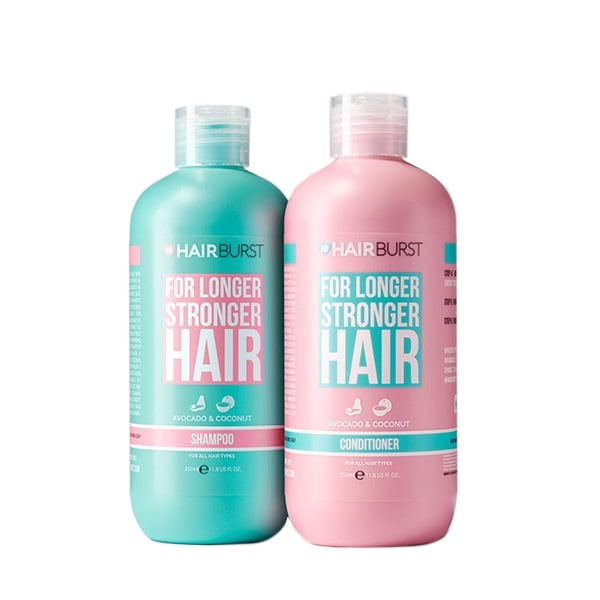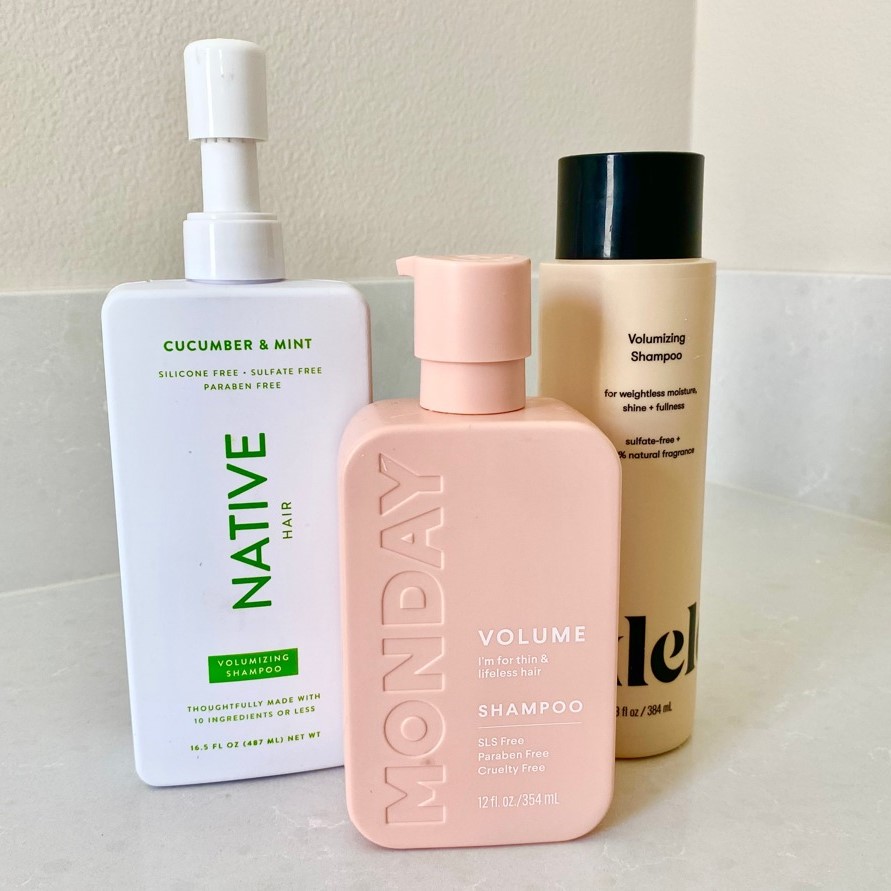Identifying Your Hair Type and Needs
Before venturing into the vast array of hair care products, it’s crucial to identify your hair type. Is it thick or thin? Curly or straight? Dry or oily? Understanding your hair’s unique characteristics is the first step to finding the best hair shampoo and conditioner for your needs.
For those with fine hair, volume may be a top priority. Look for products labeled ‘volumizing’ that can lift and add body without weighing hair down. If you have thick hair, moisturizing formulas can help manage frizz and maintain smoothness.
Curly-haired individuals should focus on products that define and enhance their natural curls. Look for shampoos and conditioners with hydrating ingredients to keep your curls elastic and lively. If your hair is straight, you might prioritize shampoos that add shine and conditioners that prevent tangling.
Lastly, consider your scalp’s health. An oily scalp will benefit from balancing shampoos that remove excess sebum without stripping. A dry or sensitive scalp may need gentle, soothing products specifically designed for comfort and moisturization.
Choosing the best hair shampoo and conditioner becomes simpler once you know what your hair and scalp need. Embrace your hair’s natural tendencies when selecting products, and you’ll be well on your way to achieving that perfect balance of cleanliness, conditioning, and care.
The Role of Ingredients in Hair Care Products
The right ingredients make all the difference in hair care. When choosing the best hair shampoo and conditioner, it’s not just about the brand or price, but the formulation which caters to your hair’s unique needs. First, let’s look at some key ingredients you might find in quality hair care products.
Moisturizers and Oils: Ingredients like argan oil, shea butter, and glycerin draw moisture into the hair. These are great for dry or brittle hair, as they can help to restore hydration and elasticity.
Proteins: Keratin or silk proteins can strengthen your hair. They bond to the hair structure, repairing and minimizing breakage. Ideal for damaged or color-treated hair, proteins also add a protective layer.
Surfactants: These are cleaning agents found in shampoos. Look for mild surfactants like decyl glucoside and cocamidopropyl betaine, which cleanse without causing excessive dryness.
Silicones and Quaternary Agents: Found in many conditioners, these ingredients smooth and detangle hair. While helpful for preventing knots, consider your hair type, as they may weigh down fine hair.
Humectants: These help hair retain moisture. They can be especially beneficial in humid climates to keep hair from becoming frizzy. Honey and panthenol are common humectants.
Sulfates and Parabens: Many people prefer to avoid these. Sulfates can strip natural oils, leaving hair dry, while parabens are avoided due to health concerns.
Remember, not all ingredients work well for everyone. It’s important to experiment with different products to find the best hair shampoo and conditioner combination that works for your hair. Monitor how your hair responds over time and adjust as needed for optimal hair health.
Top Recommendations for Dry Hair

Dry hair requires products that infuse moisture and repair damage. When searching for the best hair shampoo and conditioner for dry hair, consider ones with intensive hydrating properties. Here are some top recommendations:
- Hydrating Shampoo with Argan Oil: Shampoos containing argan oil are excellent for adding hydration. They nourish and soften dry hair, restoring its shine and flexibility.
- Shea Butter Conditioner: A conditioner with shea butter deeply moisturizes. This ingredient seals in moisture and protects hair from further damage.
- Aloe Vera-Based Products: Aloe vera is known for its soothing properties. Hair care products with aloe can help to calm the scalp and hydrate parched strands.
- Creamy Deep Conditioners: For extra dry hair, opt for a creamy deep conditioner. Use it once a week to provide an intense moisture treatment for your hair.
- Leave-In Treatments: These can be a game-changer for dry hair. Look for leave-in conditioners that contain natural oils and can be applied after showering to lock in moisture.
Remember, the key to revitalizing dry hair is regular hydration. Pair shampoos and conditioners that offer both gentle cleansing and deep conditioning. Experiment with different products to find the best hair shampoo and conditioner match for your unique hair needs. Pay close attention to how your hair reacts to these products to ensure you’re providing it with the necessary hydration and care.
Best Picks for Oily Hair Management
If you’re struggling with oily hair, choosing the right products is crucial for management. Oily hair often requires a different approach than dry hair when selecting the best hair shampoo and conditioner. Look for shampoos that can effectively remove excess oil while maintaining the natural balance of your scalp. Here’s what to consider for your oily hair care routine:
- Clarifying Shampoo: Opt for a clarifying shampoo that helps to deeply cleanse your scalp, removing build-up without stripping essential moisture.
- Lightweight Conditioner: Select a lightweight conditioner that hydrates ends without adding extra oil to your scalp.
- Balancing Formulas: Seek out shampoos with balancing ingredients like tea tree oil or green tea extract that regulate oil production.
- Sulfate-Free Options: Although sulfates are good at removing oil, they can be harsh. Sulfate-free shampoos can cleanse without over-drying.
Regular use of these types of shampoos and conditioners will help maintain your hair’s natural oils while preventing it from looking greasy. Each time you wash, focus shampoo at the roots where oil is most prominent and apply conditioner to the ends. Adjust the frequency of your washes to see what keeps your hair feeling fresh without exacerbating oil production.
Experiment with different products to find the best hair shampoo and conditioner that cater specifically to oily hair. How your hair and scalp react to these products will inform you if they are suitable for your hair care routine. Don’t forget to check the ingredients and avoid heavy moisturizers that can weigh your hair down. The ultimate goal is to achieve a balance between cleanliness and natural oil retention.
Solutions for Color-Treated and Damaged Hair

Color treatments and heat styling can stress your hair. Finding the best hair shampoo and conditioner that targets repair and protection is vital. If your hair is color-treated or damaged, follow these recommendations:
- Sulfate-Free Color-Safe Shampoo: Sulfates can strip color and increase dryness. Look for sulfate-free options that are gentle yet effective.
- Protein-Enriched Conditioner: Protein helps repair hair from within. Look for conditioners with keratin or other proteins to strengthen your hair.
- Color-Enhancing Products: Some shampoos and conditioners are designed to enhance and prolong your hair color. These might have color pigments or filters to keep your color vibrant.
- Deep Conditioning Treatments: Regular deep conditioning can revive color-treated hair. Choose treatments that offer both protein and moisture.
- Leave-In Serums: Lightweight leave-in serums can protect hair from heat damage. Apply them before using heat styling tools.
Remember, repairing and maintaining color-treated or damaged hair takes patience. Consistent use of the right products will help your hair regain its strength and shine. Monitor your hair’s condition and adjust your care routine as needed to keep your hair looking its best.
Natural and Organic Options for Hair Care
For those seeking gentler alternatives, natural and organic hair care products are an excellent choice. These options often contain plant-based ingredients and avoid harsh chemicals. Here are benefits and recommendations for incorporating natural and organic products into your regimen for the best hair shampoo and conditioner pair:
- Gentle Cleansing: Natural shampoos may use ingredients like coconut oil or soapberries for a mild cleanse that won’t strip hair.
- Nourishing Oils: Organic conditioners might feature argan, jojoba, or coconut oils to deeply nourish and strengthen hair.
- No Synthetic Fragrances: Natural hair care products typically use essential oils for scent. This reduces the risk of irritation from artificial perfumes.
- Free from Harsh Chemicals: Many natural shampoos are sulfate, paraben, and silicone-free, minimizing potential damage and buildup.
- Sustainability: Choosing organic options often means supporting eco-friendly practices, from farming to packaging.
For the best hair shampoo and conditioner experience, seek out brands with transparent ingredient lists and certifications. Pay attention to how your hair responds, and be patient, as your hair may need time to adjust to these gentler formulations.
Understanding the Importance of pH Balance in Shampoos and Conditioners

pH balance is a key factor in maintaining healthy hair and scalp. The term ‘pH’ refers to the acidity or alkalinity level. Shampoos and conditioners with a balanced pH can greatly affect how your hair looks and feels.
Healthy hair and scalp usually have a pH level of around 4.5 to 5.5. At this level, the cuticles lie flat, keeping moisture in and pollutants out. A balanced pH in the best hair shampoo and conditioner helps to prevent problems like frizziness, dryness, and damage. It may also reduce scalp issues such as itchiness and dandruff.
When shopping for hair care products, consider the pH level. Use shampoos and conditioners close to your hair’s natural pH. This will preserve the acid mantle that protects your scalp and hair. Look for products labeled ‘pH-balanced’. Avoid products with high alkalinity. These can cause the hair cuticle to open, leading to breakage and dullness.
If your shampoo makes your hair feel dry or your scalp itchy, it might have an unsuitable pH. Switch to a more balanced option and observe the change. In the long run, maintaining the right pH balance is essential for healthy, shiny hair.
Remember that the best hair shampoo and conditioner are the ones that work in harmony with your hair’s natural pH level. Keep this in mind, and you will be on your way to healthier-looking hair.
Tips for Pairing Shampoo and Conditioner for Maximum Benefit
Selecting the best hair shampoo and conditioner can be daunting. Here are tips to streamline the process.
Understand Your Hair’s Lifecycle
Grasp your hair’s growth and shedding phases. This knowledge can influence the product choice you make.
Match Shampoo and Conditioner Types
Pair volumizing shampoos with lightweight conditioners for fine hair. Use moisturizing duos for dry or thick hair types.
Read Labels Carefully
Look for beneficial ingredients that suit your hair concerns. Avoid harsh chemicals that can damage your scalp and hair.
Consider the Frequency of Use
Your hair might not need daily washing. Some need just a few washes a week. Adjust your routine to suit your hair’s needs.
Observe Your Hair’s Responses
How does your hair feel after using the products? Soft and manageable? Or is it limp and lifeless? Monitor and change products if necessary.
Mix and Match Brands
The best hair shampoo and conditioner may not come from the same brand. Don’t be afraid to mix and match to find the perfect pairing.
Look for Specialized Treatments
Add a deep conditioning treatment weekly for extra care. This is especially true for damaged or color-treated hair.
Following these tips will help you find the best hair care duo. With the right products, you’ll enjoy the benefits of beautiful, healthy hair.
